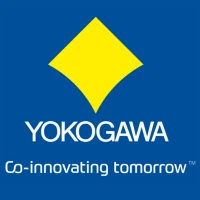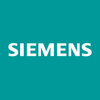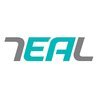
i
Yokogawa
Filter interviews by
Yokogawa Interview Questions and Answers
41 Interview questions
APC enhances efficiency, safety, and sustainability in chemical industries through advanced process control and optimization techniques.
Real-time monitoring of chemical processes to ensure optimal conditions.
Implementation of advanced control algorithms to minimize waste and energy consumption.
Use of predictive analytics to forecast equipment failures and maintenance needs.
Integration of automation systems to stre...
Feed forward systems anticipate changes, while feed backward systems respond to changes after they occur.
Feed forward systems use predictions to adjust inputs before an event occurs. Example: Climate control systems adjusting temperature based on forecast.
Feed backward systems react to changes after they happen, often using feedback loops. Example: Thermostats adjusting temperature based on current readings.
Feed f...
A JK flip-flop is a digital memory circuit that can toggle its output based on input conditions.
Inputs: J (set), K (reset), CLK (clock), Q (output), Q' (inverted output).
When J=1 and K=0, Q is set to 1.
When J=0 and K=1, Q is reset to 0.
When J=1 and K=1, Q toggles its state.
When J=0 and K=0, Q remains in its previous state.
Example: If Q=0 and J=1, K=0, after clock pulse, Q becomes 1.
A ladder diagram for a 2:1 multiplexer (Mux) controls data selection based on a single select line.
A 2:1 Mux has two data inputs (D0, D1) and one select input (S).
When S = 0, the output (Y) is D0; when S = 1, Y is D1.
Use relay contacts to represent the select line and data inputs.
Example: If D0 = 0 and D1 = 1, and S = 1, then Y will output 1.
4-20 mA is preferred over 0-20 mA for better signal integrity and fault detection in industrial applications.
4-20 mA provides a live zero, meaning 4 mA indicates the lowest measurement, ensuring the system is powered.
In 0-20 mA systems, a reading of 0 mA could indicate a fault or disconnection, leading to ambiguity.
4-20 mA allows for easier detection of sensor failures; if the current drops below 4 mA, it signals ...
Various communication protocols facilitate data exchange in systems, ensuring interoperability and efficiency.
TCP/IP: A foundational protocol for internet communication, enabling reliable data transmission.
HTTP/HTTPS: Protocols for transferring web pages; HTTPS adds a layer of security.
FTP: Used for transferring files between systems over a network.
MQTT: A lightweight messaging protocol ideal for IoT devices, ensu...
Connecting a pressure transmitter to high pressure ensures accurate readings and system safety.
High pressure connections provide more accurate measurements due to the greater pressure differential.
Pressure transmitters are often calibrated for specific pressure ranges; using HP ensures they operate within optimal parameters.
In applications like oil and gas, HP connections prevent cavitation and ensure reliable dat...
Understanding level measurement methods for tanks is crucial for accurate monitoring and control in various applications.
Zero Suppression: Adjusts the output signal to account for a minimum level, useful in open tanks to avoid false readings.
Elevation: Involves raising the reference point for measurement, often used in closed tanks to account for pressure changes.
Zero-Zero Tapping: A method where two reference poi...
Process control is the regulation of processes to maintain desired outputs and ensure system stability and efficiency.
Involves monitoring and adjusting process variables like temperature, pressure, and flow rate.
Examples include temperature control in a furnace or pressure control in a chemical reactor.
Utilizes feedback loops to maintain desired performance levels.
Can be applied in various industries such as manuf...
A relay is an electromechanical switch that uses an electromagnetic coil to control the opening and closing of contacts.
Relays consist of an electromagnet, armature, and contacts.
When current flows through the coil, it generates a magnetic field.
The magnetic field attracts the armature, closing or opening the contacts.
Used in applications like automotive systems to control lights or motors.
Can be used for isolatin...
Yokogawa Interview Experiences
53 interviews found
I appeared for an interview in Jun 2025, where I was asked the following questions.
- Q1. Tell us about the advance controller in the industry
- Ans.
Advanced controllers optimize industrial processes, enhancing efficiency, precision, and adaptability in various applications.
Types of advanced controllers include PID controllers, fuzzy logic controllers, and model predictive controllers.
PID controllers are widely used in temperature control systems, such as in HVAC systems.
Fuzzy logic controllers are effective in applications like washing machines, where they adapt t...
- Q2. Name the major process involved in the refinery
- Ans.
Refinery processes convert crude oil into valuable products like gasoline, diesel, and jet fuel through various methods.
Distillation: Separates crude oil into fractions based on boiling points.
Cracking: Breaks down larger hydrocarbons into smaller, more valuable products (e.g., gasoline).
Reforming: Converts low-quality naphtha into high-octane gasoline.
Hydrocracking: Uses hydrogen to convert heavy oils into lighter pro...
- Q3. Controller tuning methods
- Ans.
Controller tuning methods optimize system performance by adjusting controller parameters for desired response.
Ziegler-Nichols Method: A heuristic tuning method based on system response to step inputs.
PID Tuning: Adjusting Proportional, Integral, and Derivative gains for optimal control.
Cohen-Coon Method: A tuning method for processes with time delays, providing a balance between speed and stability.
Model-Based Tuning: ...
I appeared for an interview in Jun 2025, where I was asked the following questions.
- Q1. Core java related questions
- Q2. Dsa and projects
I appeared for an interview in Jun 2025, where I was asked the following questions.
- Q1. Core java with examples
- Ans.
Core Java is the foundation of Java programming, focusing on object-oriented principles and essential libraries.
Object-Oriented Programming: Java uses classes and objects. Example: class 'Car' with attributes like 'color' and methods like 'drive()'.
Data Types: Java has primitive types (int, char) and reference types (String, arrays). Example: int age = 25;
Control Structures: Java supports if-else, switch, loops (for, w...
- Q2. Dsa programs, time complexities
(1 Question)
- Q1. About my experience, talk about the internship I had and projects I've done
(1 Question)
- Q1. Why I wanted to have this job
- Ans.
I am passionate about utilizing my technical skills to drive sales and provide innovative solutions to customers.
I have a strong background in engineering and enjoy working with customers to understand their needs.
I am motivated by the challenge of meeting sales targets and exceeding customer expectations.
I believe this role will allow me to combine my technical expertise with my passion for sales and customer service.
(1 Question)
- Q1. Project Architecture, Design Pattern, Angular Coding, SQL
(1 Question)
- Q1. Communication protocol Loops Basic programming skill
I appeared for an interview in Jan 2025, where I was asked the following questions.
- Q1. What is a Distributed Control System (DCS) and how does it function?
- Ans.
A Distributed Control System (DCS) is a control system that uses distributed architecture to manage complex processes.
DCS consists of multiple controllers distributed throughout the system.
Each controller manages a specific part of the process, enhancing reliability.
Communication between controllers is typically done via a network.
DCS is commonly used in industries like oil and gas, power generation, and manufacturing.
...
- Q2. What is a Programmable Logic Controller (PLC)?
- Ans.
A PLC is an industrial digital computer used for automation of electromechanical processes.
Used in manufacturing for controlling machinery, such as conveyor belts.
Can be programmed to perform specific tasks based on input signals.
Examples include controlling temperature in HVAC systems and managing assembly lines.
Robust design allows operation in harsh environments with high reliability.
I appeared for an interview in Jan 2025, where I was asked the following questions.
- Q1. Write a ladder diagram for 2:1 Mux
- Ans.
A ladder diagram for a 2:1 multiplexer (Mux) controls data selection based on a single select line.
A 2:1 Mux has two data inputs (D0, D1) and one select input (S).
When S = 0, the output (Y) is D0; when S = 1, Y is D1.
Use relay contacts to represent the select line and data inputs.
Example: If D0 = 0 and D1 = 1, and S = 1, then Y will output 1.
- Q2. Truth table for JK flip flop
- Ans.
A JK flip-flop is a digital memory circuit that can toggle its output based on input conditions.
Inputs: J (set), K (reset), CLK (clock), Q (output), Q' (inverted output).
When J=1 and K=0, Q is set to 1.
When J=0 and K=1, Q is reset to 0.
When J=1 and K=1, Q toggles its state.
When J=0 and K=0, Q remains in its previous state.
Example: If Q=0 and J=1, K=0, after clock pulse, Q becomes 1.
Interview Preparation Tips
I appeared for an interview in Jan 2025, where I was asked the following questions.
- Q1. What is the definition of process control?
- Ans.
Process control is the regulation of processes to maintain desired outputs and ensure system stability and efficiency.
Involves monitoring and adjusting process variables like temperature, pressure, and flow rate.
Examples include temperature control in a furnace or pressure control in a chemical reactor.
Utilizes feedback loops to maintain desired performance levels.
Can be applied in various industries such as manufactur...
- Q2. Explain the working of Relay....?
I appeared for an interview in Sep 2024.
Some verbal, numbering system, Reasoning questions
(2 Questions)
- Q1. Control system and management
- Q2. Instrumentation
Top trending discussions






Yokogawa Interview FAQs
The duration of Yokogawa interview process can vary, but typically it takes about less than 2 weeks to complete.
Tell us how to improve this page.
Yokogawa Interviews By Designations
- Yokogawa Executive Engineer Interview Questions
- Yokogawa Engineer Trainee Interview Questions
- Yokogawa Assistant Manager Interview Questions
- Yokogawa Graduate Engineer Trainee (Get) Interview Questions
- Yokogawa DCS Engineer Interview Questions
- Yokogawa Executive Interview Questions
- Yokogawa Trainee Interview Questions
- Yokogawa Graduate Trainee Interview Questions
- Show more
Interview Questions for Popular Designations
Overall Interview Experience Rating
based on 47 interview experiences
Difficulty level
Duration
Interview Questions from Similar Companies
Yokogawa Reviews and Ratings
based on 617 reviews
Rating in categories
Bangalore / Bengaluru
3-8 Yrs
Not Disclosed
|
Executive Engineer
431
salaries
| ₹4.1 L/yr - ₹10 L/yr |
|
Assistant Manager
278
salaries
| ₹10.1 L/yr - ₹18.5 L/yr |
|
Executive
158
salaries
| ₹4.9 L/yr - ₹11.1 L/yr |
|
Deputy Manager
150
salaries
| ₹13.2 L/yr - ₹21.8 L/yr |
|
System Engineer
97
salaries
| ₹3.3 L/yr - ₹7.5 L/yr |

Siemens

Schneider Electric

Johnson Controls

Honeywell Automation
- Home >
- Interviews >
- Yokogawa Interview Questions













